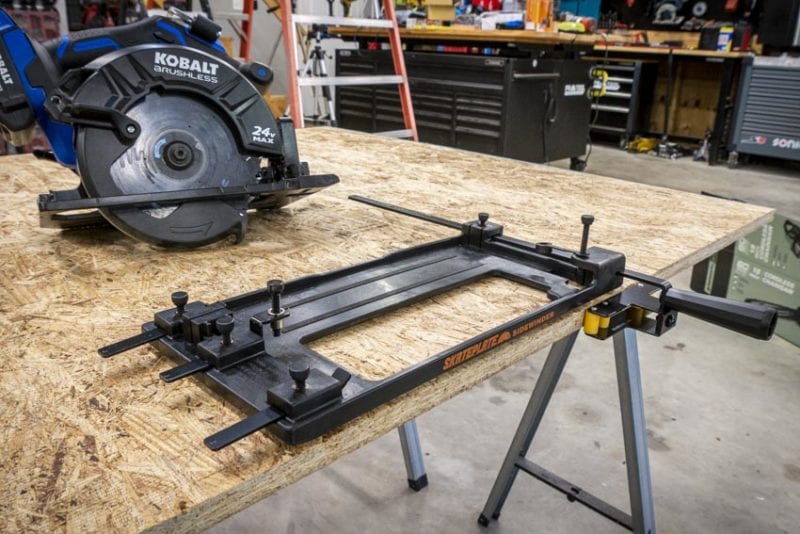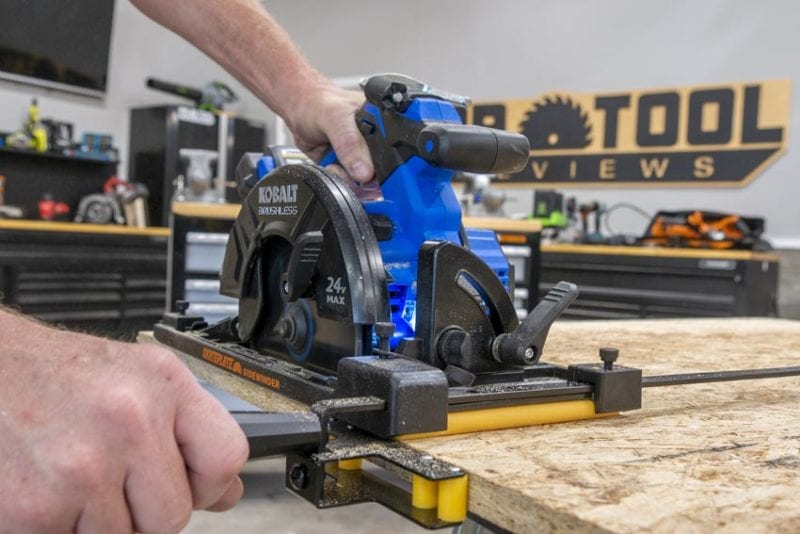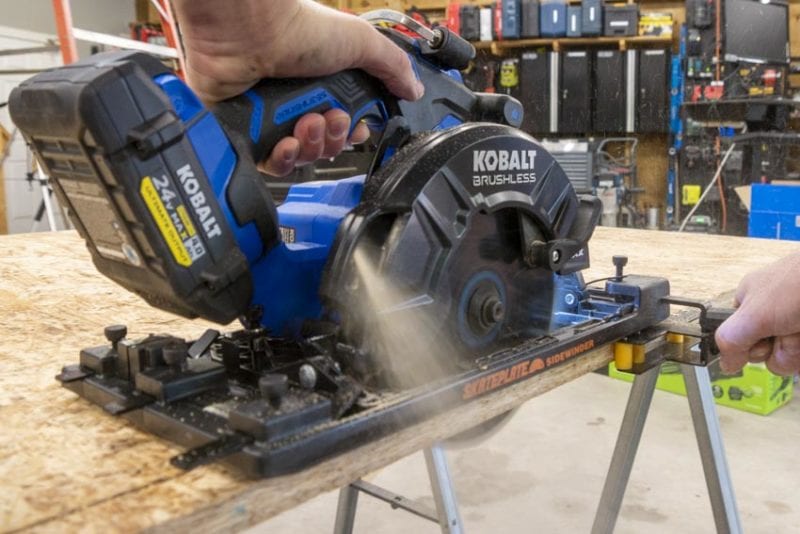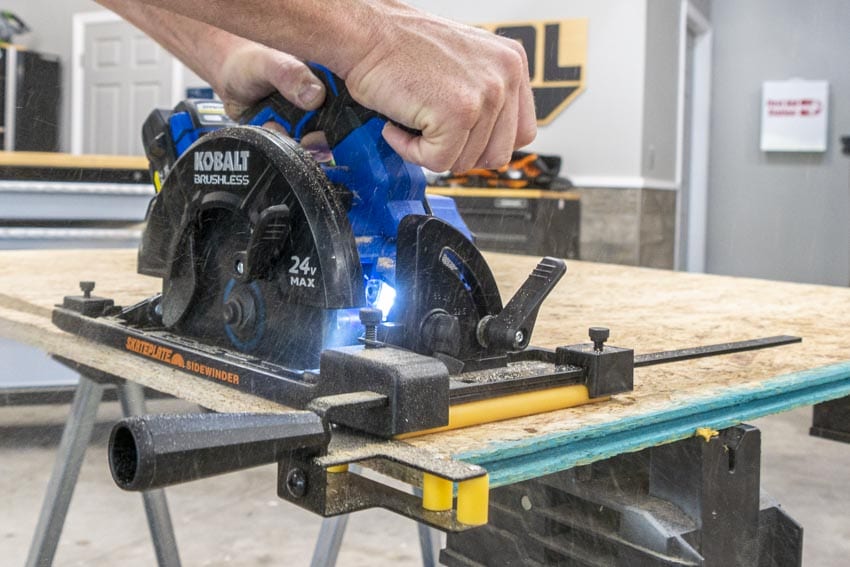We see a lot of accessories for power tools and circular saws are a popular target. Some are hits, others are misses. So where does the Skateplate circular saw guide fit in the conversation? We got our hands on the sidewinder version to see how it might change out cutting experience.
Pros
- Fits most any sidewinder-style circular saw—corded or cordless
- Worm drive version available
- Impressive friction reduction whether you’re using the base plate on its own or with the fence
Cons
- You lose roughly 1/4-inch of cutting depth
What Does the Skateplate Do?
The Skateplate has two basic pieces: a rolling base (the Skateplate) and a rolling fence (the SkateGuide). The base plate acts to reduce friction as you glide your circular saw across any material you’re cutting with a set of polyurethane rollers. On its own, it’s a benefit to many saws. We have some, such as our Makita cordless saws, that seem to glide effortlessly with the stock shoe. Others, such as some of our DeWalt saws, feel downright sticky. No matter which end of the spectrum you’re on, the rollers glide with much less friction.

The standard fence does the same job as any circular saw fence by helping you make cuts that maintain a distance from the side. Your cut is as straight as the edge you’re gliding along. The SkateGuide improves things with a set of rollers. Similar to the base plate, the goal is to reduce friction.

In our shop, we use it to cut boards in preparation for testing or other projects. It’s pretty common for us to cut full sheets of OSB into 4 or 5-inch strips, and the Skateplate/SkateGuide combo makes that process much easier.
Skateplate Trade-Offs
The biggest trade-off you’ll notice is a slight reduction in your maximum cutting depth. For 7 1/4-inch saws, it’s not a big deal unless you’re using a model that can cut 3x in one pass. Those tend to be right on the edge and the loss of a 1/4-inch of depth can make the difference of completing the cut in one pass or not. The same goes for any cut where your max depth is really close.
The only other thing to keep in mind is that this is a more or less universal fit accessory. Once you get it set to a saw, you’ll have to make adjustments if you want to install a different one. For the way we use it, we just have a dedicated Skateplate saw.

Skateplate Price
Several retailers carry the Skateplate and other accessories. The system we tested with the plate and SkateGuide runs $79.95. Here are some other options you can try.
- Skateplate and SkateGuide for Worm Drives: $79.95
- H2O Water Saw System: $89.95
- SkateGuide-Zilla (extra long for cuts up to 24 inches): $39.95
- SkateGuide: $24.95
- Carry Bag: $24.95
- Replacement Rollers: $15.95
The Bottom Line
The Skateplate and SkateGuide combination is a big win. If you’re already used to making serial cuts with a fence, you’ll love how much smoother the process is with lower friction. Heck, it even makes standard cuts without a fence easier and you won’t have to worry about scratching finished material.
Learn more at Skateplate’s website.



